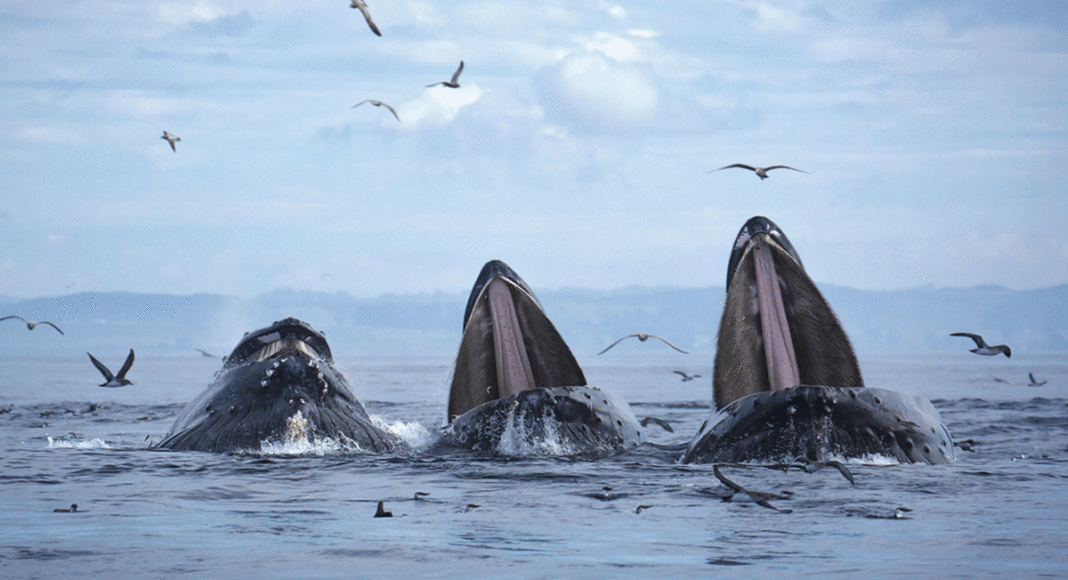Look out across Monterey Bay, and you may notice a dense fog, or, on a more clear day, the far reaches of a mountainous peninsula. You’ll likely spot a few waves crashing, or maybe even some hungry predators on the hunt for a fishy meal.
What you definitely won’t see, though, are oil rigs. That total lack of heavy machinery dotting the horizon makes for an awfully calming design feature—one for which we owe thanks to environmentalists like Dan Haifley, who founded Save Our Shores in 1978 and advocated for the establishment of a marine sanctuary in a fight that began more than three decades ago.
When dedicated in 1992, the Monterey Bay National Marine Sanctuary (MBNMS) was the largest marine sanctuary in the continental United States, at nearly 4,600 square nautical miles, stretching from Cambria to Marin County. As the sanctuary celebrates 25 years, Haifley has been looking back on his battle to protect the space, which he’ll discuss in a lecture through the Democratic Women’s Club on Saturday, Sept. 23.
“We were burning the midnight oil a lot, but it was gratifying and quite a bit of fun,” says Haifley, now the executive director for the O’Neill Sea Odyssey. “There were moments that were difficult, like when an ad opposing the sanctuary was posted in the New York Times, but overall it was a great way to spend seven years,”
A 1969 Santa Barbara oil spill—to date, the third-largest spill ever in U.S. waters—was a call to action, as was a growing opposition to oil and gas exploration off the California coast. It helped too that then-Congressmember Leon Panetta, like Haifley, wanted to protect the Monterey Bay’s rich biodiversity.
Haifley recalls promoting the largest possible boundary for the sanctuary, thinking that it would never be approved, in its entirety, due to pushback from then-President George H. W. Bush’s administration. But Bush approved the boundaries for the sanctuary, despite his background in offshore oil development. Haifley credits scientific research around the bay, along with a large pool of grassroots organizers, for creating a swell of support.
Haifley says that likely wouldn’t happen the same way today, especially now that President Donald Trump has ordered a review of any new sanctuaries or the expansion of existing sanctuaries established in the last 10 years. (The administration has set its sights on national monuments, too, mostly to accommodate mining and similar business interests.) In a different political climate, natural crude reserves between San Francisco and Davenport might have proved too tempting for the industry not to tap into, Haifley says. Protecting it all, he explains, “would have been very difficult, if not impossible, to do today.”
“1992 was the year to do it—we got lucky in terms of timing,” he says.
Haifley says that the new review process for marine sanctuaries could potentially lead to the loss of the Davidson Seamount—a 2009 addition to the MBNMS—although he believes that both research and the immense public support should prevent the federal government from making any changes locally.
Future proposals to create national marine sanctuaries will now likely have to wait a bit longer. Under the Obama administration, Surfrider Foundation and Sierra Club tried to lay groundwork to protect the San Luis Obispo County coast with a proposed Chumash Heritage National Marine Sanctuary. But after Trump’s inauguration, work has slowed. But Haifley believes a tide of support will carry projects like this sooner or later.
“People are just being patient, they are waiting, and we had to wait for a couple of years, too,” Haifley says. “Just organize, gather your facts, check them twice, get people onto your side and present a solid case. If it doesn’t happen today, it may happen tomorrow, but persistence is very important.”
The Democratic Women’s Club will host a 25th anniversary celebration of the MBNMS at 10 a.m. on Sept. 23 in the Santa Cruz Police Department Community Room, where Haifley will speak. For more information about the sanctuary, visit montereybay.noaa.gov.













